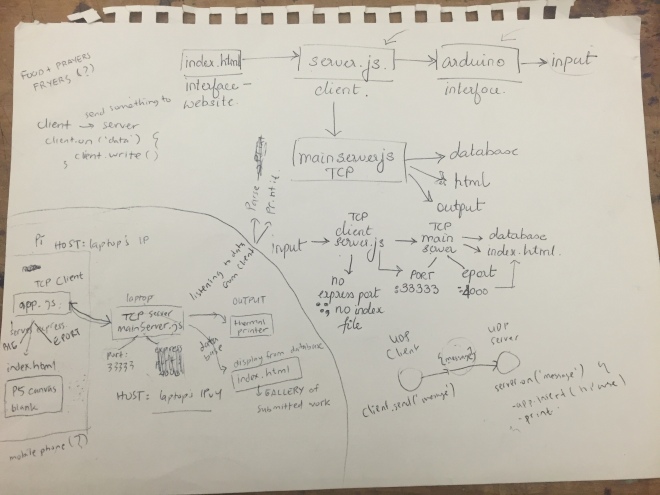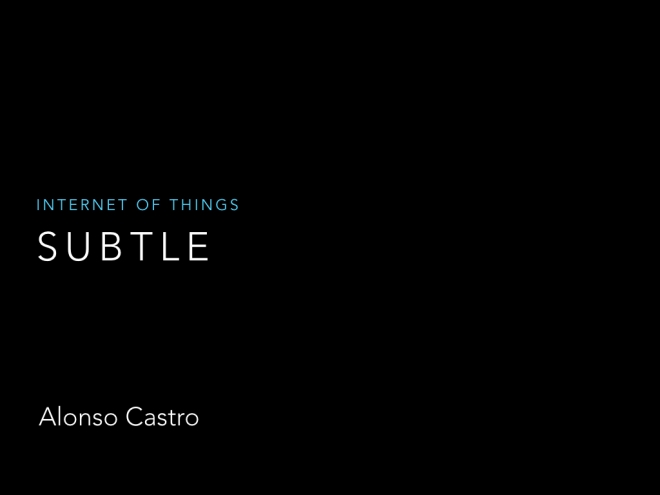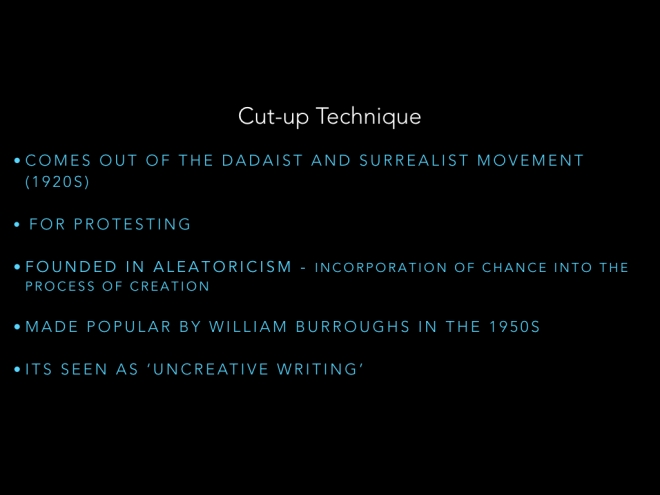Here’s the link for what you need to buy this semester: https://docs.google.com/document/d/1GCPUTskxm-qF8kt7zlycFaRjSfEMfxiLOyHItCFTiRY/edit
Author: alonsojcastro
Subtle – Alonso’s Final
Link to repo… https://github.com/casta828/casta828_iot_code




——————————-
Presentation






IoT Midterm – Smart Coffee Cup
//// Really enjoyed and was a pleasure to see everyone’s concepts developed into very ////nice projects as well as have professors critique our work.
The Smart Coffee Cup was a small scale project firstly planned as a coffee brewing system. But this project follows the same goal and structure. I wanted to make monitoring of coffee safer by controlling coffee levels and heat power to prevent coffee from burning or evaporating.

 I used a water temperature sensor and a coffee level sensor that I made to know if the person is running low on coffee or coffee is too hot to drink. The system included a Piezo Buzzer, LED light, LCD screen and on/off button for the alarm system to inform the user for real-time monitoring and the LED lights would turn green or red depending on the inputs pressed.
I used a water temperature sensor and a coffee level sensor that I made to know if the person is running low on coffee or coffee is too hot to drink. The system included a Piezo Buzzer, LED light, LCD screen and on/off button for the alarm system to inform the user for real-time monitoring and the LED lights would turn green or red depending on the inputs pressed.
The plan was to have data sent to the computer and represented as a p5js animation to show coffee levels or messages. While the touch sensitive module reset the system and start reading data again.
The assignment was not fully done, but will be continued as planned…
this is the repository on github: https://github.com/casta828/casta828_iot_code/tree/master/coffee
Audrey and Alonso HW5 – Rfduino – Rfduino – RasPi – Server
All the work was accomplished in partnership with Audrey @foxa706
We started a few days after class to review the slides and try to accomplish the same results. Once we got communication between the host and device then, decided to use a potentiometer and show the data on the website. See below:
We also tried to use a photo resistor instead of the potentiometer to figure out if it would work the same way as the previous input. It did, but reading only one string of data (1-9), which is what we wanted. Then, Audrey came up with a concept that included an enclosure for our Pi. See below:
The concept was based on Halloween and the celebrations around the holiday. We wanted to use the photo resistor to control the light for our Jack O’ Lantern. The photo resistor would pass data to the LED’s depending on the amount of light being transmitted. At the same time, our data would also change the background of our site as well as the Jack O Lantern images to demonstrate the transformation between day and night.
Alonso’s (Priyal, Umi, Jasmine and Shikah) HW4
Arduino – Raspberry Pi LEDs Blink with Node
Internet of Things and Mail Art
Mail Art History: The Fluxus Factor” by Ken Friedman
During “Mail Art, Then and Now”, specifically in the article by Ken Friedman, I thought it was interesting to see the timeline of events and what really was mail art and correspondence art. The reading went through explaining that correspondence art was reciprocal and interactive whereas mail art was always one-way mail that did not require any response back. Then, the reading explained the creation of the New York Correspondence School as well as Europe’s Nouveaux Realistes, both conglomerate of artists started mail art as a new art expression of creativity. After connections and communication between artists, the Fluxus movement was developed to organize mail art in the forms of events, exhibits, festivals, etc. I believe the reading about fluxus commemorates times where analog technology had more freedom and romanticism since there were less constrictions. But similar ideas can be applied to the 21st century with new digital technologies and programming.
The starters of correspondence art and mail art as well as the Fluxus movement, as I understood from the reading, let me understand that their ideas applied to the 21st century are really not obsolete. Their experimentation, and definition of intermedia answered their questions of how to seek new concepts by asking themselves “Why?”, “How?” “Why not?”, ”How else?”. In the 1950s through the 1960s and early 1970s, many new technologies were applied to improve people’s lives, but the so called “routine” complicated lifestyle. And nowadays, based on the ideas from Fluxus, we as technologists can create new simple concepts with playfulness, but with a meaning to find issues in the pursuit of serving society.



